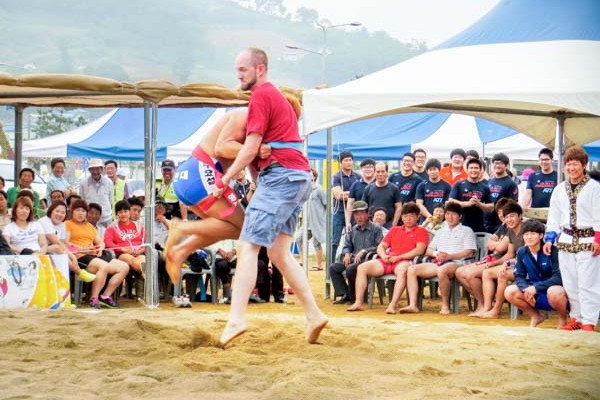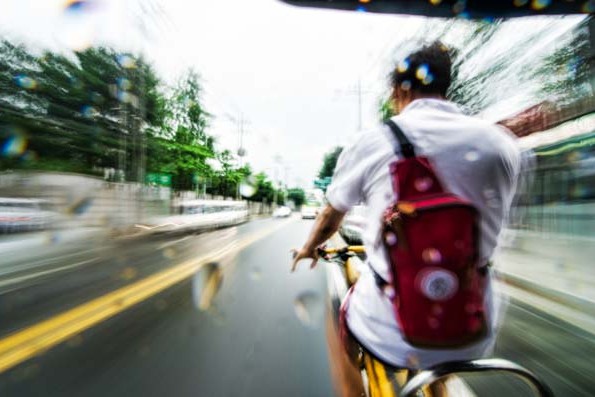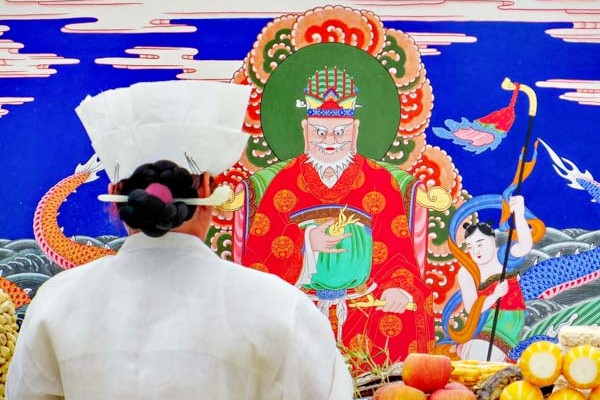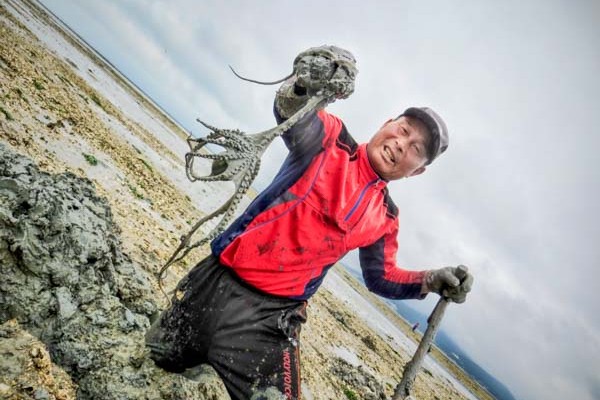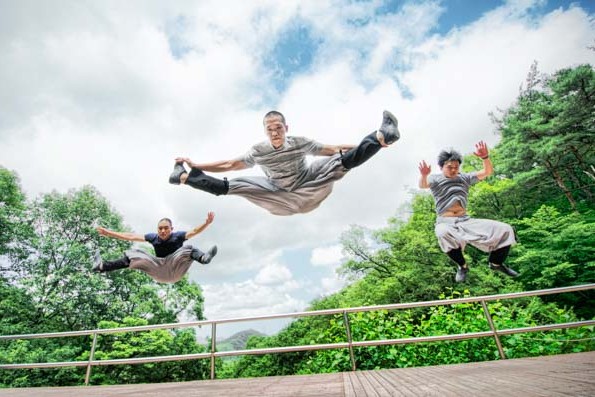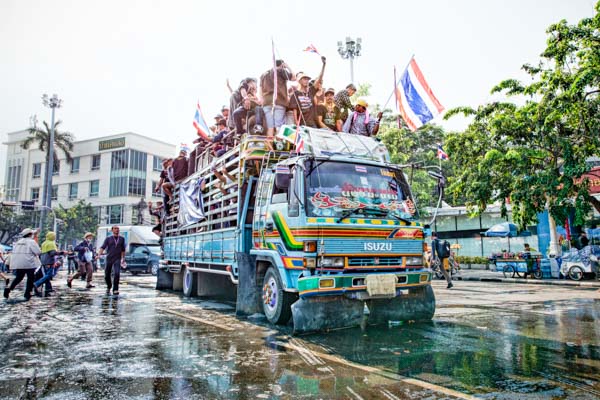For more than 40 years, Kim Dong-pyo has been creating Hahoe maskerpieces in his humble workshop.
During that time, he has met the Queen of England, shaken hands with American Presidents, appeared on television, been featured in countless publications and reached the zenith of the Hahoe mask making field.
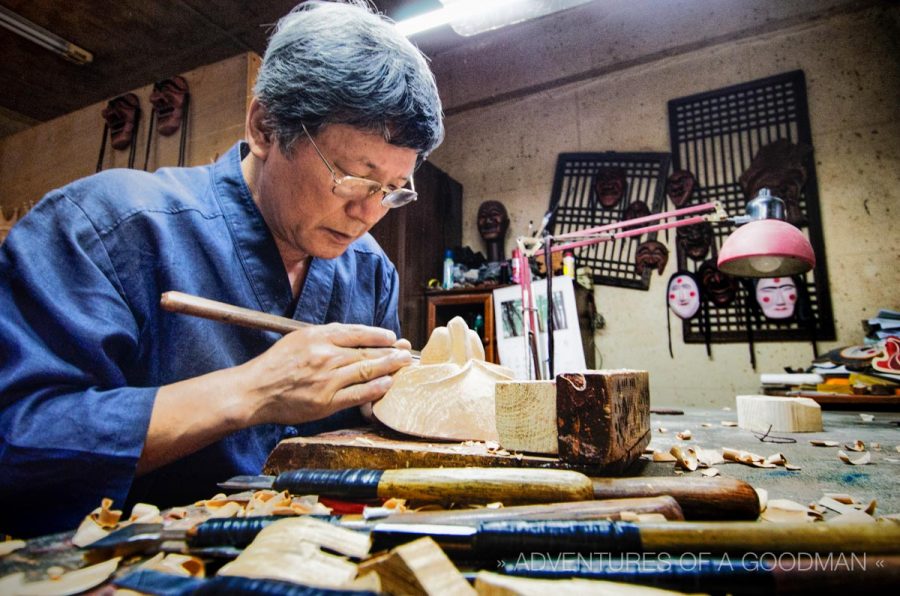
A Brief History of Hahoe Masks
Spiritual in nature, Hahoe masks are an integral part of the Korean Shamanistic dance drama called Pyolshin-Gut.
Part gut (religious ceremony and exorcism) and part entertainment, this performance has been held regularly since the 12th century.
Today, the tradition lives on in the touristic Korean village of Hahoe Maeul in Andong, South Korea, which is where I met Kim Dong-pyo.
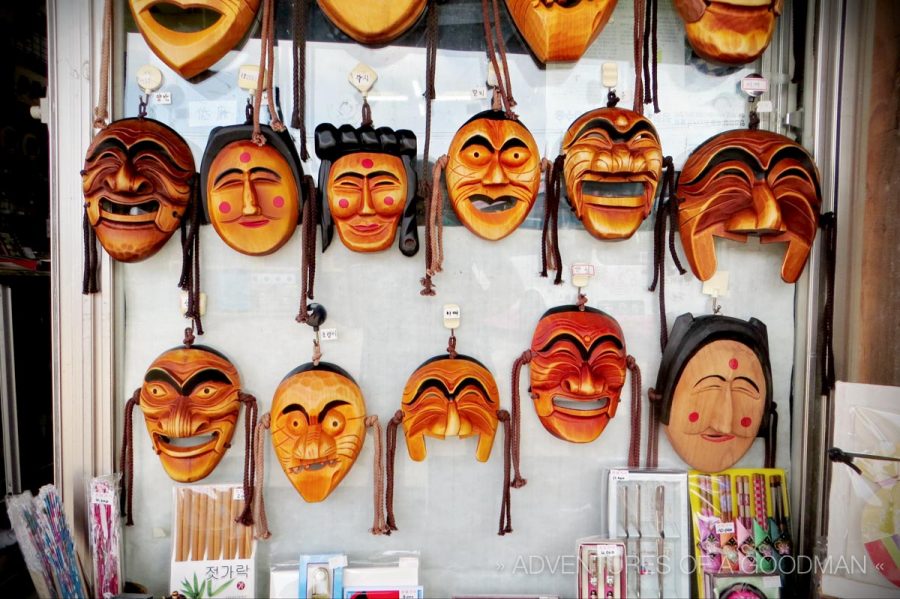
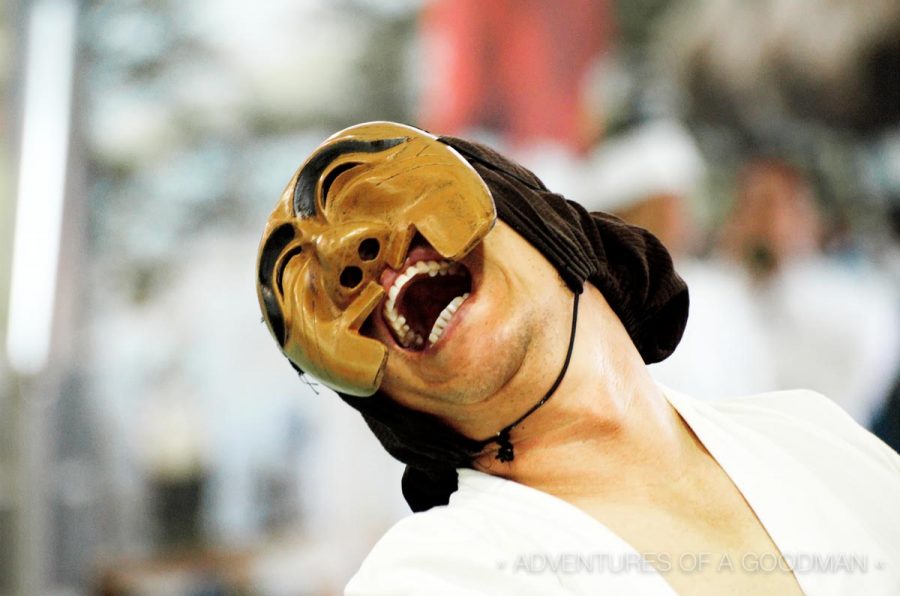

An Interview WithKim Dong-pyo — South Korea’s Master Hahoe Mask Maker
Unfazed by fame, Kim Dong-pyo prefers to spend his days in a humble workshop with a cigarette between his lips and a woodcarving tool in his hand.
That’s exactly how I found him; hard at work with a huge smile on his face and an infectious excitement to share his passion.
Below are his paraphrased words, as I needed three interpreters for our interview.
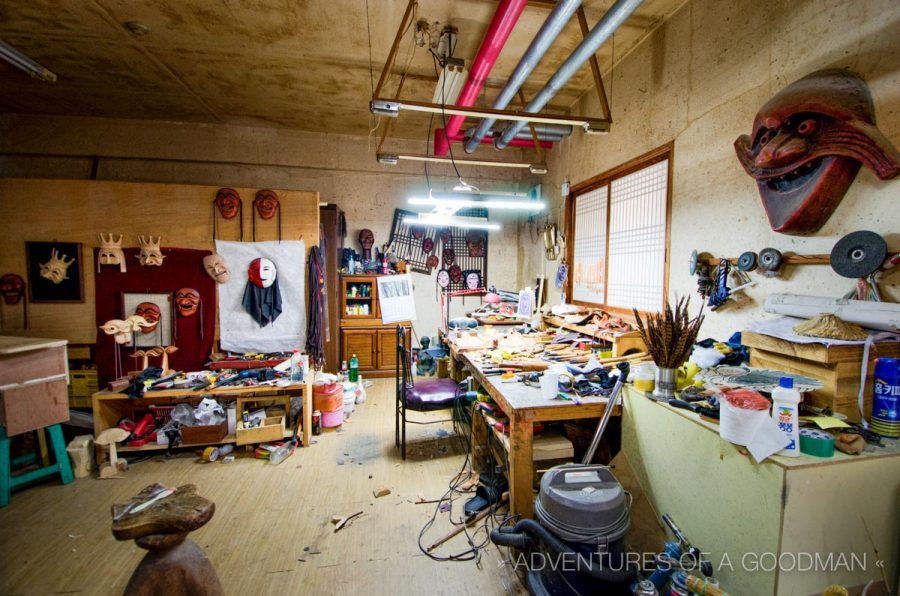
Q. How many masks have you made in your lifetime?
A. SO MANY!!!!
When I started, it took me about a day to make a mask. Today, it takes me five.
I was much more rushed back then and the work was not as good. The masks I make today are of a much higher quality and well-worth the extra time and effort.
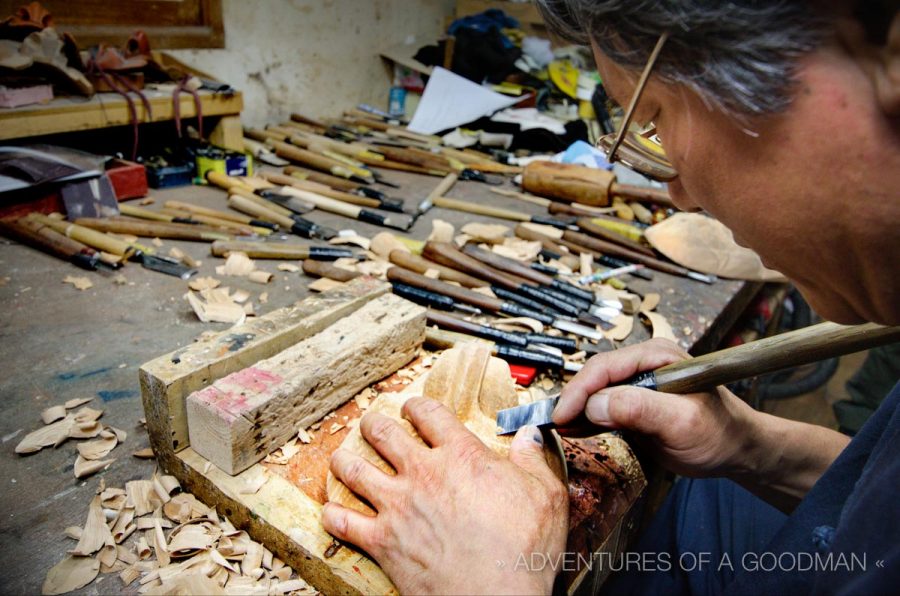
Q: What is the purpose of a Hahoe Mask?
A. Going back to the old centuries, people believed the masks were spiritual. When they wore them in the Pyolshin-Gut play, it was their way of connecting with the spirits.
. . .
Q. What makes these masks so special?
A. With the nobleman [the mask he carved during our interview], the face and mouth are separate pieces that move individually according to the motion of the actor.
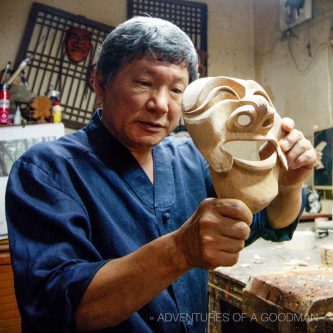
When the actor moves his head upwards, the mask seems to smile or express glee.
Similarly, when the actor’s head points downwards, the mask’s mouth forms an angry face that also can be described as a frown.
These emotions allow the audience to relate to each character in the performance. It also makes the masks more spiritual.
The only way to truly experience this is to put the mask on yourself. It’s meaningless without the actor behind it.
[at this point, I tried on the nobleman mask. You can see the whole scene on my TV show]
. . .
Q: Who smiles the most?
A. The nobleman; he has no worries and lots of free time, so he’s always smiling.
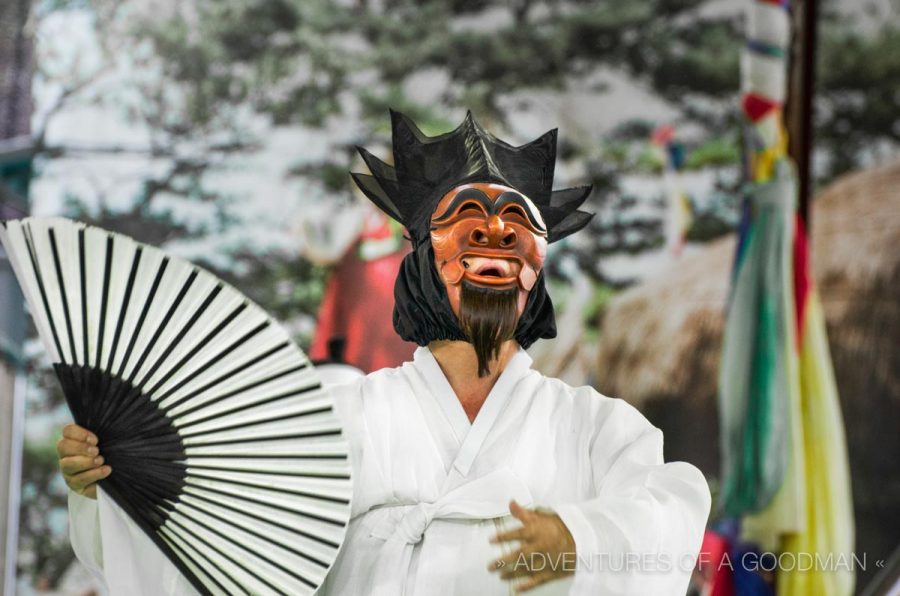

Q. What is the process of making a mask?
A. Each mask starts as a log from an Ori tree. From there, I whittle it down until it begins to take the shape of a face.
Next, I use these tools [see right] to carve the details of the face.
Every line I carve has to look like it’s connected and harmonized; even though the eyes and mouth are far away from each other. This is done by creating an imaginary circle between the two.
Faces usually are a bit sharp; but, these lines help make the mask softer.
Finally, I sand the rough mask down, shellac it and apply paint.
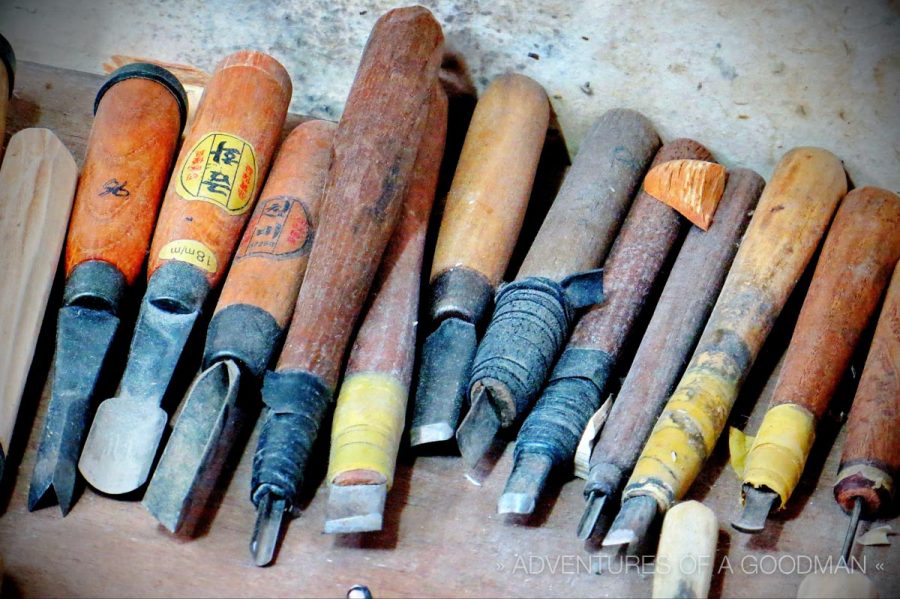
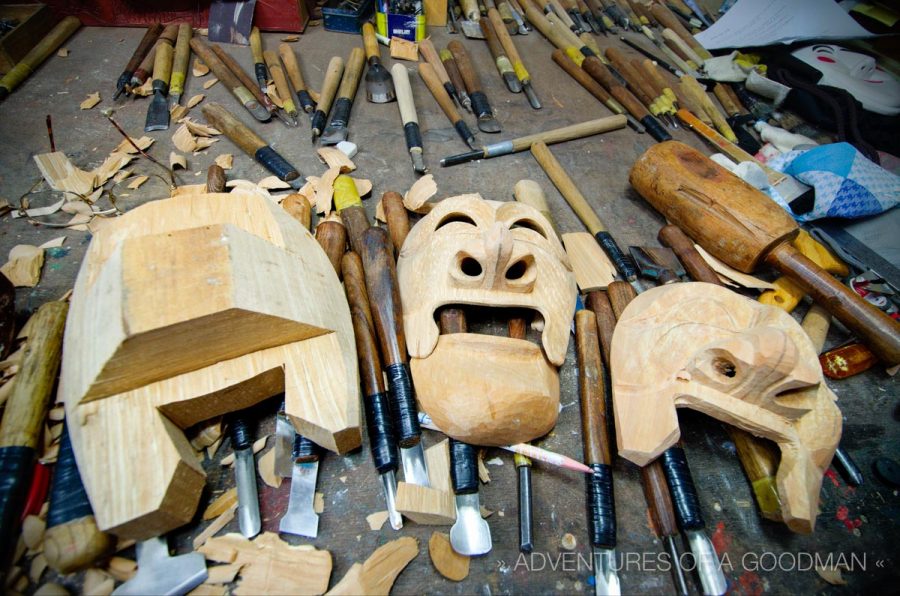
Q. Who is your favorite character to make a mask of?
A. It’s impossible to choose one and I don’t want to either. Each mask has its own personality and each is the best in its own way.
If I favor a certain character, I might spend more time or attention on that one and neglect the rest in some way. By not having a favorite, I can give each mask equal love and respect.
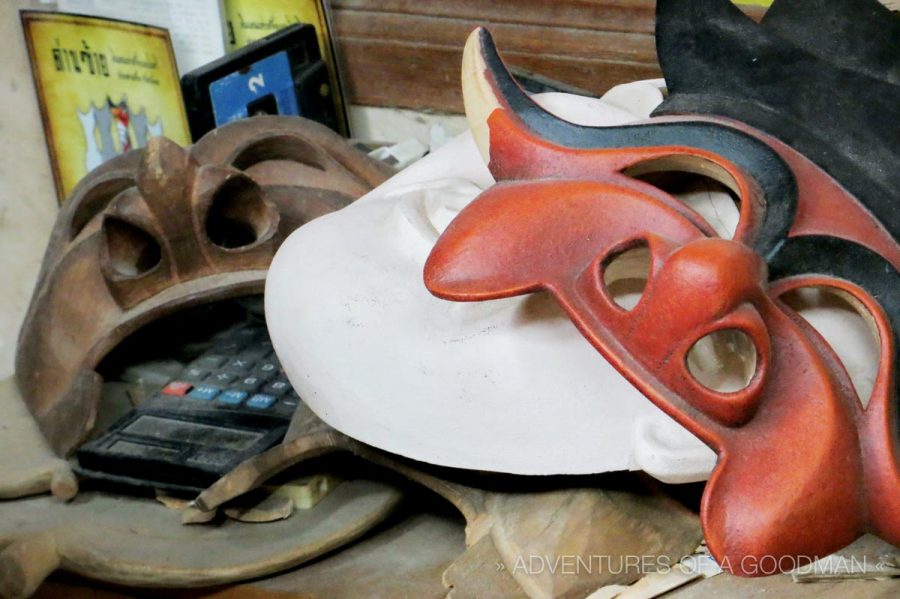
Moving On
At this point, the interview came to an end and Kim Dong-pyo gave us all miniature Hahoe masks.
When asked if he made them, Mr Dong-pyo smiled and said, “no; these are just replicas made out of plastic.”
We all had a good laugh, exchanged handshakes and said goodbye. It was time to get back on my bicycle and explore more of Hahoe village.

GET LOST IN KOREA
In 2013, I was hired by National Geographic to film a TV show in South Korea … following my adventures as a travel blogger and photographic storyteller.
The single-episode show offered a mix of humor, tradition, adventure and stunning imagery; as I teamed up with Jesse Day: a Canadian entertainer who lives in Seoul and raps in Korean.
Here are the highlights from filming Get Lost in Korea …
EXPLORE SOMEWHERE NEW
BUY A PRINT
All photos on this site are available as limited edition fine art photographic prints. Please get in touch for sizes and rates.



